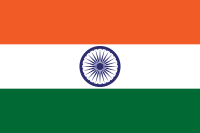This is an old revision of this page, as edited by RandomCritic (talk | contribs) at 17:47, 30 October 2006 (rv erroneous deletion). The present address (URL) is a permanent link to this revision, which may differ significantly from the current revision.
Revision as of 17:47, 30 October 2006 by RandomCritic (talk | contribs) (rv erroneous deletion)(diff) ← Previous revision | Latest revision (diff) | Newer revision → (diff) For other uses, see Dharmachakra (disambiguation).The Dharmacakra (Sanskrit) or Dhammacakka (Pāli), Tibetan chos.kyi 'khor.lo, Chinese fălún 法轮, "Wheel of Dharma" is an auspicious Buddhist symbol representing a Buddha's teaching of the path to enlightenment. It is also sometimes translated as wheel of doctrine or wheel of law. A similar symbol is also in use in Jainism.
History
The Dharmacakra symbol has the form of wheel with eight or more spokes (sometimes 24 spokes representing the solar cycle). It is one of the oldest Buddhist symbols, found in Indian art from the time of the Buddhist king Aśoka, and used by all Buddhist nations ever since. One version of the symbol, taken from the capital of a pillar erected by Aśoka, is found on the flag of the modern state of India. In its simplest form, it is recognized globally as a symbol for Buddhism.
Symbolism

The eight spokes represent the Noble Eightfold Path of Buddhism. They are said to have sharp edges to cut through ignorance.
Other symbolisms in the eight-spoked Dharmacakra in Buddhism:
- Its overall shape is that of a circle (cakra), representing the perfection of the dharma teaching
- The hub stands for discipline, which is the essential core of meditation practice
- The rim, which holds the spokes, refers to mindfulness or samadhi which holds everything together
The corresponding mudrā, or symbolic hand gesture, is known as the Dharmacakra Mudrā.
The Dharmacakra is one of the eight auspicious symbols of Tibetan Buddhism.
The dharma wheel can refer to the dissemination of the dharma teaching from country to country. In this sense the dharma wheel began rolling in India, then arrived in China, and then to Korea, etc.
Multiple turnings of the Wheel
According to some Buddhist schools, the Buddha turned one or more Dharmacakras over the course of his teaching. All Buddhists agree that the first turning of the wheel occurred when the Buddha taught the five ascetics at the Deer Park in Sarnath. (Because of this, a Dharmacakra is often seen with a deer on each side.) Accounts of the subsequent turnings of the wheel vary.
For instance, the second wheel of Dharma was said to be the Abhidharma, whereas the third wheel of Dharma were the Mahāyāna Perfection of Wisdom Sutras, and the fourth wheel of Dharma were the Yogacarya or Cittamatrin sutras that taught the Tathāgatagarbha.
Tantric (Vajrayāna) Buddhists also use the term "turning of the dharma wheel" to refer to the progressive development of Buddhism which culminates in their school. According to this image:
- The first turning of the dharma wheel refers to Gautama Buddha's original teaching, in particular the Four Noble Truths which describes the mechanics of attachment, desire, suffering, and liberation via the Eightfold Path.
- The second turning refers to the teaching of the Perfection of Wisdom sutra, a foundational text of Mahayana Buddhism.
- The third turning refers to the teaching of the Mahavairocana Sutra, a foundational text of Tantric Buddhism.
The Doctrine of Three Wheels is Buddha's teaching that the dharma wheel must turn three times for a student to understand the dharma: once for hearing, again for understanding, and finally for internalizing.
Dharmacakra in Jainism
In Jainism, the Dharmachakra is worshipped as a symbol of the dharma.
Other
The dharmacakra from Ashoka's Lion Capital at Sarnath is the national symbol of India. It represents the dharma i.e. natural conduct of a nation. The wheel is also in the Flag of India.

In the Unicode computer standard, the Dharmacakra is called the "Wheel of Dharma" and found in the eight-spoked form. It is represented as U+2638 (☸).